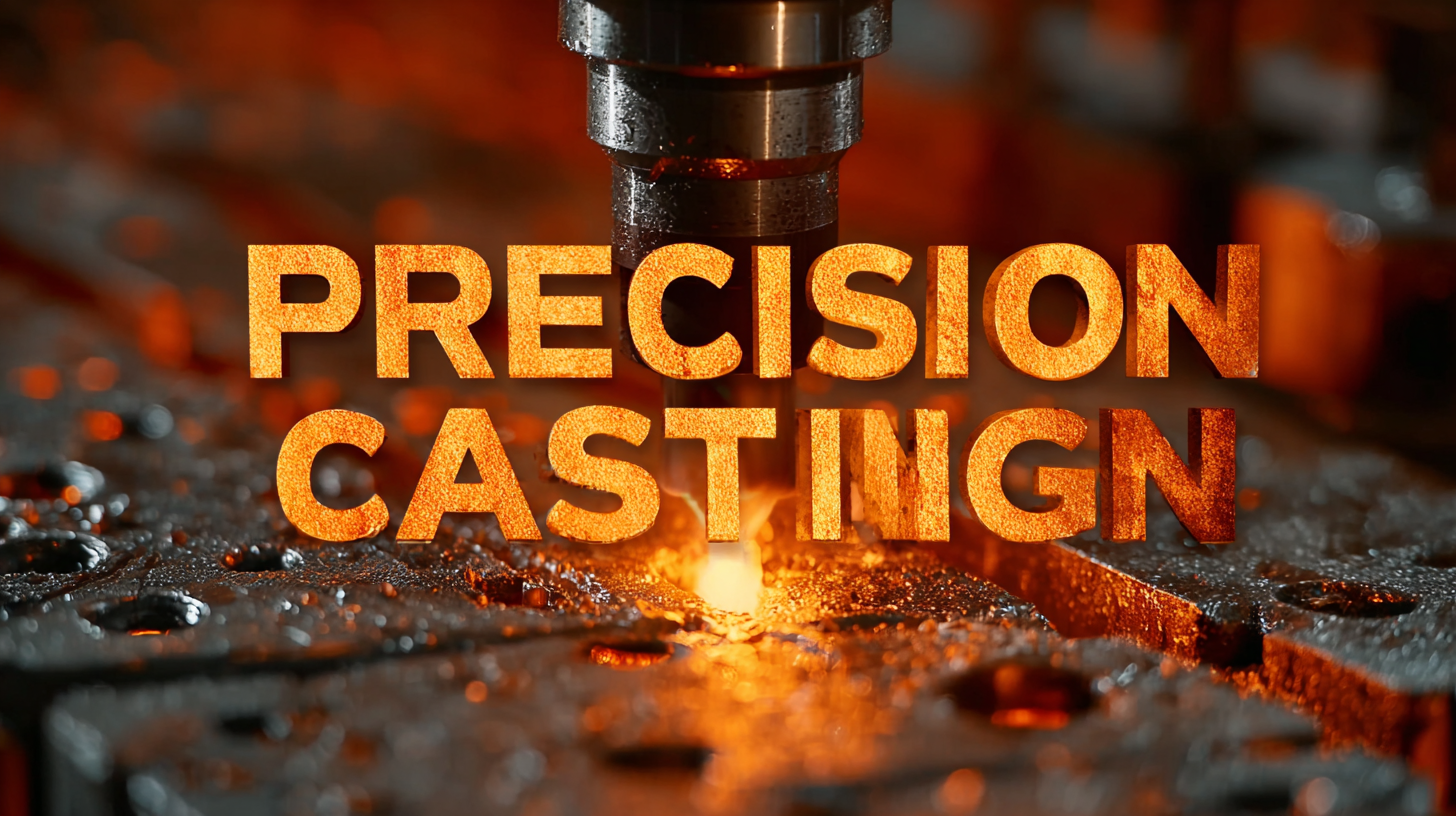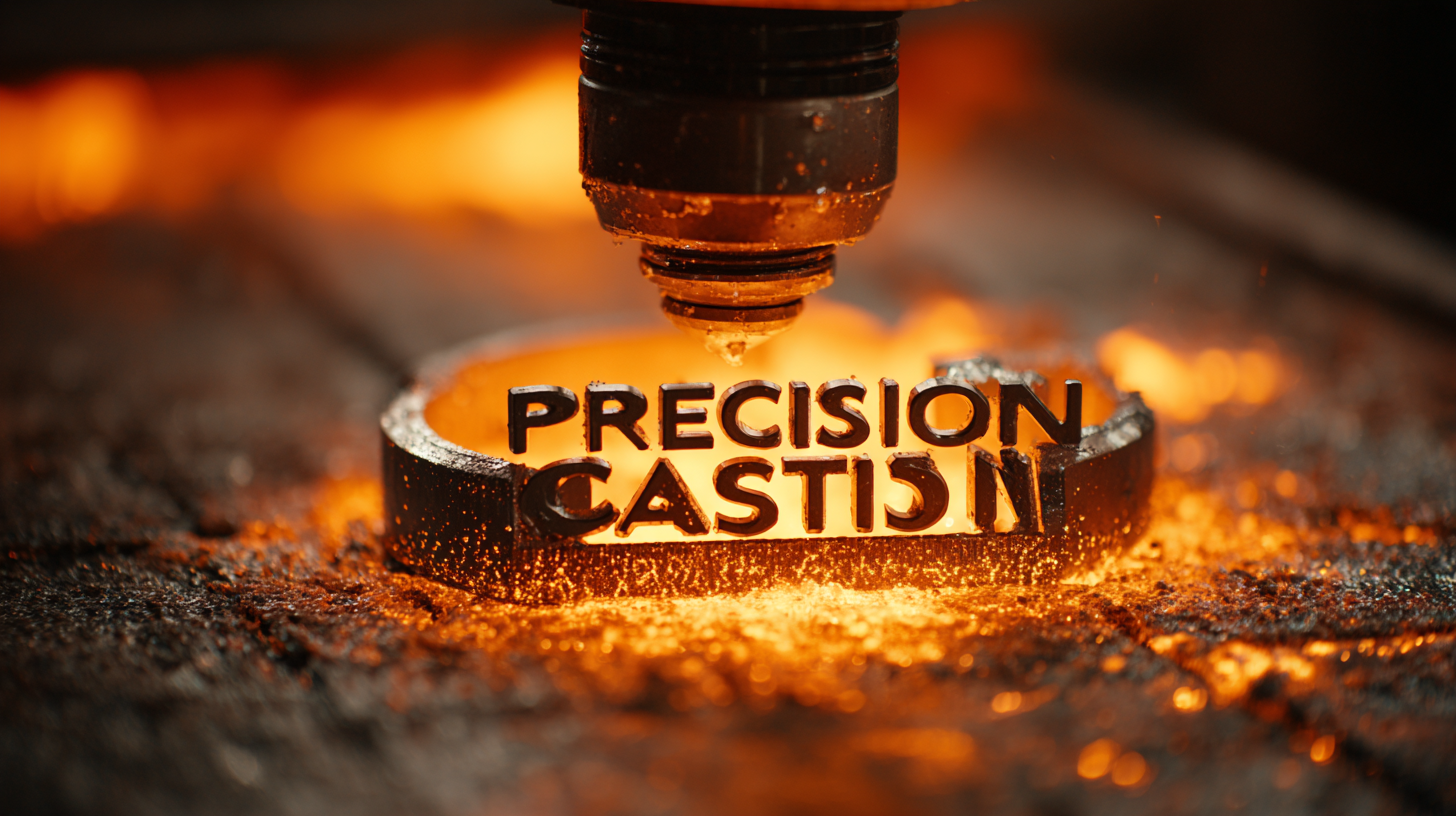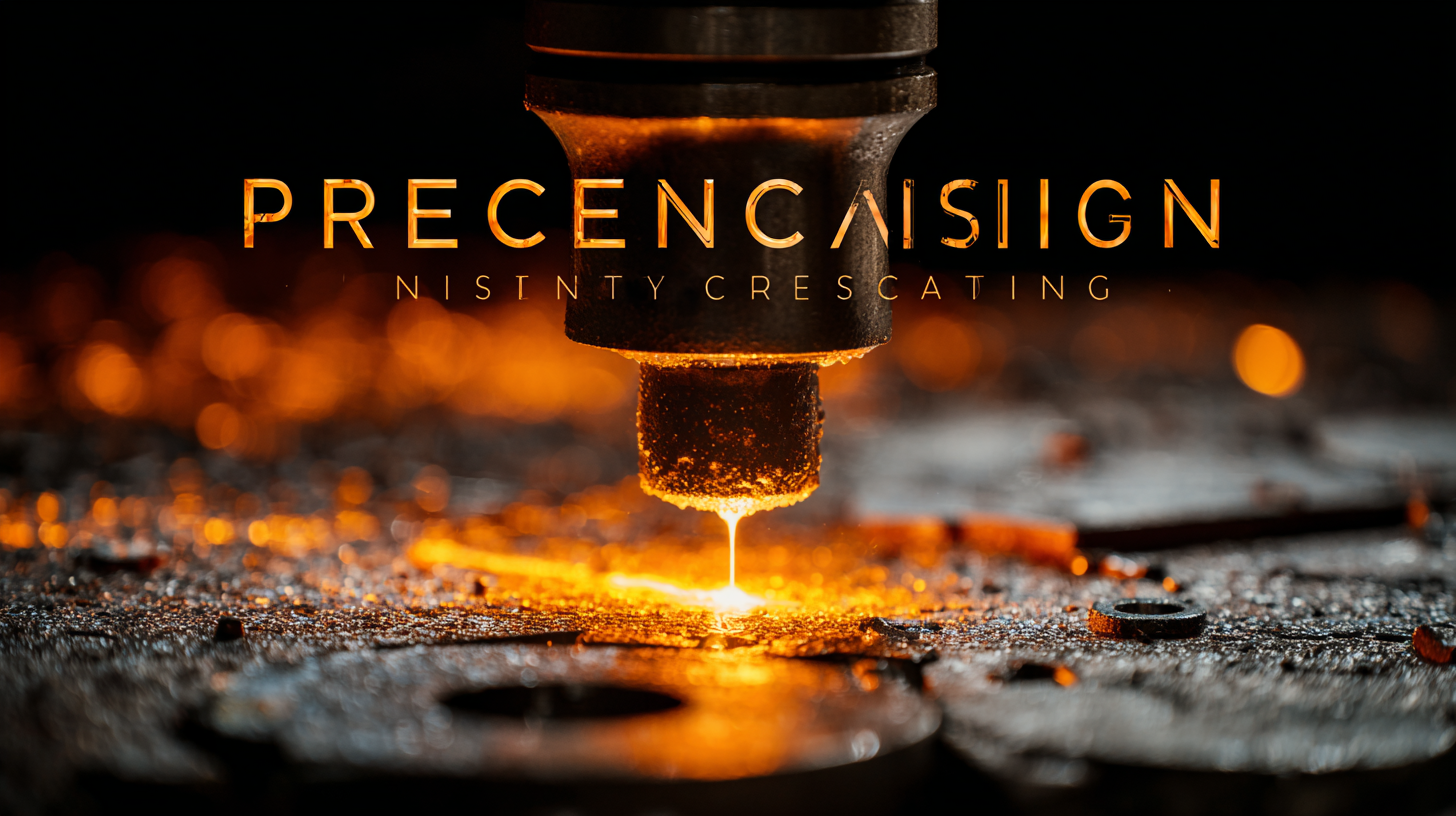 +86 180 0293 5268
+86 180 0293 5268






In the evolving landscape of manufacturing, Precision Investment Casting is poised to be a game changer by 2025. As highlighted in a recent report by Mordor Intelligence, the global precision casting market is expected to reach USD 17.24 billion by 2027, growing at a CAGR of 6.8% from 2022. This advanced technique offers unparalleled benefits in terms of material utilization, dimensional precision, and surface finish, making it an ideal choice for industries ranging from aerospace to medical devices. The ability to produce complex geometries with minimal waste aligns with the industry's increasing focus on sustainability and efficiency, driving a significant shift towards this innovative casting method. As we delve into the diverse applications and advancements in Precision Investment Casting, it becomes evident that this revolutionary process will redefine manufacturing standards and practices in the near future.

The future of precision investment casting in 2025 promises to be transformative, paving the way for advancements that could revolutionize the entire manufacturing landscape. As industries strive for greater efficiency, manufacturers are increasingly turning to precision investment casting for its ability to produce complex geometries with minimal waste. This method enhances product performance and reduces costs, making it a vital component in sectors ranging from aerospace to healthcare.
To fully embrace the benefits of precision investment casting, businesses should consider implementing advanced technologies such as automated inspection and artificial intelligence. These innovations can enhance quality control and streamline operations. For instance, integrating AI into the design phase can optimize the casting process, leading to improved precision and reduced manufacturing time.
Moreover, companies should invest in training their workforce to adapt to these new technologies. Upskilling employees not only increases productivity but also fosters a culture of innovation. Encouraging collaboration between engineers and production teams can further enhance the effectiveness of precision investment casting, ultimately leading to more sustainable and economically viable manufacturing processes.
The advanced precision investment casting techniques are set to revolutionize key industries, particularly aerospace, automotive, and medical. According to a report by MarketsandMarkets, the global investment casting market is projected to reach USD 25.8 billion by 2025, growing at a CAGR of 5.4% from 2020. This growth is driven by the increasing demand for lightweight components that offer high strength and durability—attributes essential in the aerospace sector for improving fuel efficiency and performance. In fact, industry leaders are increasingly adopting precision casting to create complex geometries that conventional manufacturing methods cannot achieve.
In the automotive industry, the shift towards electric vehicles (EVs) necessitates sophisticated components that are both lightweight and cost-effective. A study by the International Energy Agency (IEA) forecasts that EV sales will reach 145 million units by 2030, leading to a substantial demand for advanced casting techniques that can produce critical parts like battery enclosures and chassis components. Furthermore, the medical industry is benefiting from precision casting’s ability to produce surgical implants and tools with exceptional accuracy and biocompatibility. As these sectors continue to evolve, the integration of advanced casting techniques will undoubtedly play a pivotal role in shaping the future of manufacturing, driving efficiencies and enhancing product performance.
This chart illustrates the expected percentage growth in key industries benefiting from advanced precision investment casting techniques by 2025. The adoption of these technologies is predicted to enhance manufacturing efficiency and product quality across various sectors.
 The landscape of manufacturing is on the brink of transformation as innovations in precision investment casting evolve rapidly. This advanced process allows for the creation of complex geometries with unmatched accuracy, making it increasingly relevant across various industries, from aerospace to medical devices. Key advancements such as new alloys and 3D printing technology are setting the stage for a future where manufacturability and design flexibility are paramount.
The landscape of manufacturing is on the brink of transformation as innovations in precision investment casting evolve rapidly. This advanced process allows for the creation of complex geometries with unmatched accuracy, making it increasingly relevant across various industries, from aerospace to medical devices. Key advancements such as new alloys and 3D printing technology are setting the stage for a future where manufacturability and design flexibility are paramount.
Tip: Embrace the integration of AI and machine learning to optimize the investment casting process. These technologies can streamline workflows, reduce waste, and improve the quality of molds and casts, leading to substantial cost savings and increased production efficiency.
Moreover, eco-friendly materials and processes are gaining traction, pushing companies to adopt sustainable practices. This shift not only addresses environmental concerns but also caters to the growing consumer demand for responsible manufacturing. As manufacturers innovate, they are likely to adopt hybrid approaches that combine traditional methods with cutting-edge techniques.
Tip: Regularly invest in training for your workforce on the latest technologies and sustainable practices in precision casting. A knowledgeable team will not only enhance operational efficiency but also drive innovation as they adapt to and implement new technologies.
As the manufacturing landscape evolves, precision casting takes center stage in the drive towards sustainability. This innovative technique not only improves the quality and reliability of various metal parts, particularly in industries like aerospace and automotive, but it also significantly reduces waste, aligning perfectly with eco-friendly manufacturing practices. By minimizing material consumption while maximizing output, precision casting contributes to a greener manufacturing process.
To leverage the benefits of precision casting, manufacturers should consider implementing advanced inspection systems. These systems enhance manufacturing precision and facilitate the identification of inefficiencies, thereby driving sustainable practices. Additionally, adopting simulation strategies can help in crafting innovation excellence, particularly in sectors like tire manufacturing, where precision can drastically impact performance and sustainability.
**Tips for Sustainable Precision Casting**:
1. **Invest in Advanced Technologies**: Utilize AI and machine learning frameworks to improve accuracy and efficiency in the production process.
2. **Optimize Materials**: Focus on sourcing sustainable materials that reduce environmental impact while maintaining high quality.
3. **Enhance Training**: Provide training for employees on sustainable practices and the importance of precision manufacturing to foster a culture of responsibility.

The shift toward precision investment casting in manufacturing presents both challenges and opportunities for industry players. One significant challenge is the initial investment in advanced technology and equipment. Adopting precision casting methods requires manufacturers to upgrade their capabilities, which can involve high costs and the need for technical expertise. Additionally, companies must navigate the complexities of integrating new processes into existing production lines, risking potential disruptions during the transition period.
On the other hand, the opportunities that precision investment casting brings are substantial. This technique offers superior dimensional accuracy and surface finish compared to traditional methods, enabling manufacturers to produce intricate designs that were previously thought impossible. Furthermore, the capability to work with a wider range of materials opens doors to new applications across various sectors, such as aerospace, automotive, and medical devices. As manufacturers invest in the innovation and optimization of precision investment casting, those who successfully embrace these changes could gain a competitive edge in the evolving landscape of manufacturing.
